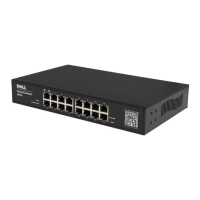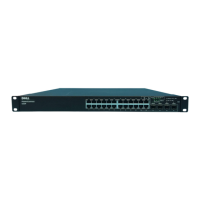Template Last Updated - 2010 Switch Management 71
DELL CONFIDENTIAL – PRELIMINARY 8/9/16 - FOR PROOF ONLY
6
Switch Management
This section describes how to set system parameters, such as security features,
switch software, system time, logging parameters and more.
It contains the following topics:
• IP Addressing Overview
•Switch Information
• IPv4 Addressing
• IPv6 Addressing
•File Update and Backup
• Domain Name System (DNS)
• Time Synchronization
• Management Security
IP Addressing Overview
The device functions as an IPv6-compliant host, as well as an IPv4-host (also
known as dual stack). This enables device operation in a pure-IPv6 network,
while ISATAP tunnel enables device operations in combined in a combined
IPv4/IPv6 network.
Difference Between IPv4 and IPv6 Addressing
The primary difference between IPv4 to IPv6 is the length of network
addresses. IPv6 addresses are 128 bits, whereas IPv4 addresses are 32 bits.
Thus, IPv6 addresses enable the use of many more unique addresses.
The 128-bit IPv6 address format is divided into eight groups of four
hexadecimal digits. Abbreviation of this format by replacing a group of zeros
with double colons (::) is acceptable. IPv6 address representation can be
further simplified by suppressing the leading zeros.
All IPv6 address formats are acceptable, yet for display purposes, the system
displays the most abbreviated form, which replaces groups of zeros with
double colons and removes the leading zeros.

